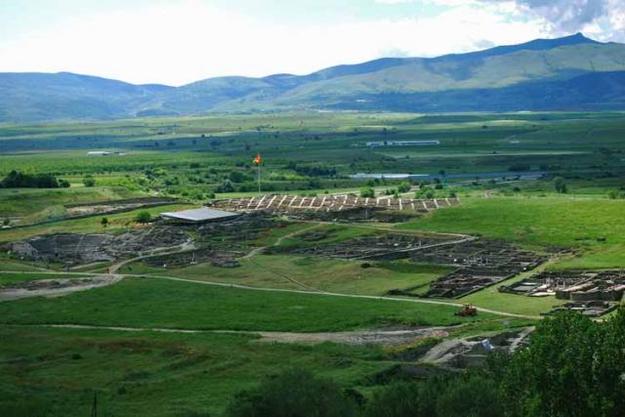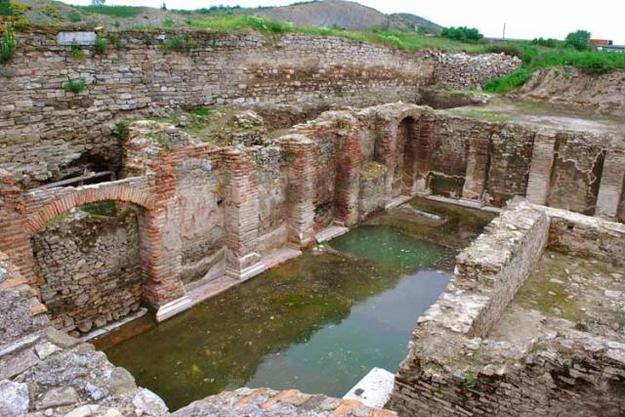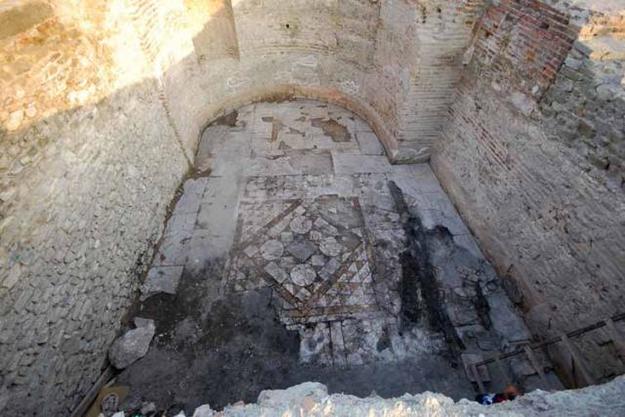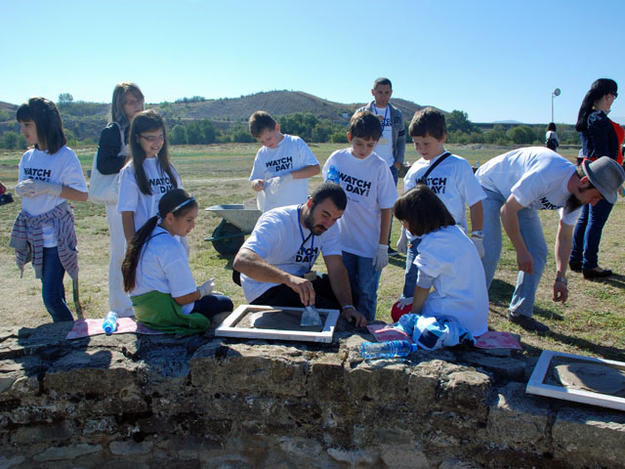Stobi
2012 World Monuments Watch
The ancient city of Stobi lies at the confluence of the Crna and Vardar Rivers, and was an important urban, military, administrative, trade, and religious center of the Roman and early Byzantine empires. Thought to have been first inhabited in the sixth century B.C., significant urban development and demographic expansion occurred from the first to third centuries A.D. and Stobi continued to develop and expand until it was abandoned around the turn of the seventh century. The archaeological remains within the city walls occupy 27 hectares on three terraces that slope towards the Crna; suburbs and cemeteries are located outside the city walls. The site contains 26 exposed buildings, including a theater, synagogue, palaces, houses, basilicas, and baths, and has been excavated for nearly a century. Due to poor site drainage, Stobi is constantly threatened by flooding and rising subterranean water, and lacks an integrated plan for research, conservation, interpretation, and community engagement. Stobi is one of the most significant and well-known archaeological sites in the Republic of Macedonia and provides insight into the historical events, material culture, and urban planning of the Hellenistic, Roman, and early Christian settlements in the area. A management plan has been developed, but expertise and resources are needed to advance its implementation, especially in the areas of conservation and cultural tourism.
Since the Watch
During 2013, National Institution Stobi carried out 3 excavation projects and 8 projects for the conservation and restoration of architecture and artifacts. Parts of the mosaic from the Old Episcopal Basilica were conserved during a conservation workshop in which new lime mortar bedding was applied to 72 mosaic pieces and affixed on aluminum honey comb panels. In late 2013, a small EU grant supported a project for “Preliminary investigation in the Episcopal Basilica and the Baptistery” which included a geo-scan of the area around the basilica, chemical analysis of the mortar from the walls and laser scan documentation of the southern wall. March 2015
Watch Day 2012
Watch Day is a series of celebratory and educational events held at World Monuments Watch sites around the globe. At Stobi, schoolchildren from local schools and from Skopje participated in a mosaic workshop on site. Archaeologists and educators provided instruction on ancient techniques, and the children created mosaic panels and watercolors with designs patterned on the site’s famous fifth-century mosaics. Become a fan of Stobi in the blogosphere.




